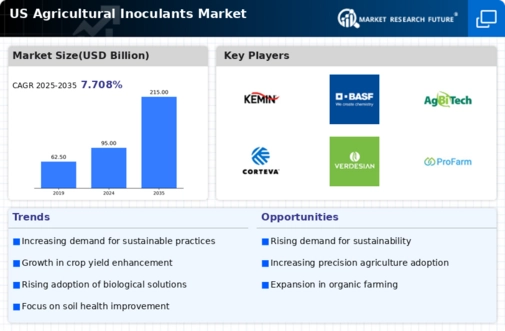The US Agricultural Inoculants Market is characterized by a dynamic landscape, where competition is driven by innovation, technology, and a focus on sustainability in agricultural practices. This sector, dedicated to enhancing soil health and crop productivity through various microbial inoculant products, is seeing increased participation from both established and emerging players. The competitive insights in this market highlight the presence of key firms that are investing in research and development to create products that cater to the evolving needs of farmers seeking to optimize yields while minimizing environmental impact.
As the agricultural sector transitions towards more sustainable practices, the demand for effective inoculants that enhance soil fertility and plant health is gaining traction, making the competitive dynamics even more pronounced.ABM Industries is a significant player in the US Agricultural Inoculants Market, with a well-established presence known for its extensive experience in maintaining agricultural sustainability practices. The company leverages its knowledge of environmental stewardship to produce high-quality inoculants that enhance crop yields and improve soil health for farmers across various segments.
ABM Industries stands out for its tailored solutions designed to meet the specific needs of diverse agricultural practices, from small-scale to large-scale operations. Its commitment to innovation and continual improvement in the production processes allows ABM Industries to maintain a competitive edge, ensuring its place in the market as a reliable provider of advanced inoculant solutions.Kemin Industries also holds a prominent role in the US Agricultural Inoculants Market, using its strong research foundation to offer a range of specialized products including microbial inoculants that enhance crop resilience and promote sustainable farming.
Kemin Industries benefits from its broad market presence and longstanding relationships with agricultural producers, which enable it to effectively distribute its innovative solutions. The company's key offerings, including proprietary formulations developed through extensive R&D, are designed to improve soil microbial activity and contribute to overall ecosystem health. Additionally, Kemin Industries has engaged in strategic mergers and acquisitions to strengthen its market position and expand its product portfolio, enhancing its ability to serve various agricultural sectors within the US, further solidifying its reputation as a leader in agricultural inoculant solutions.





















Leave a Comment